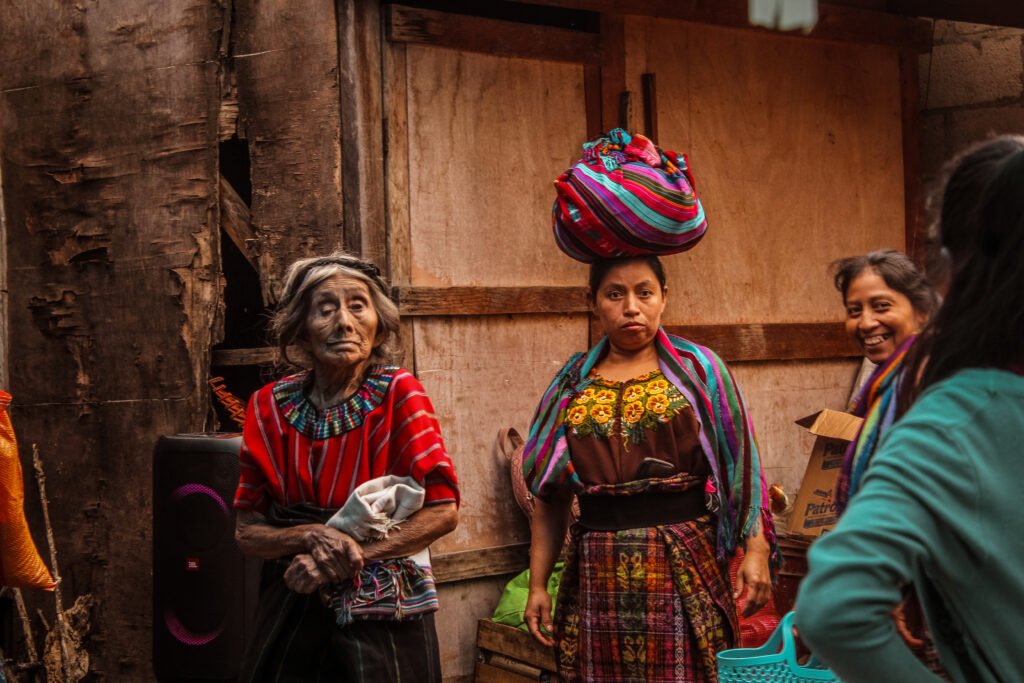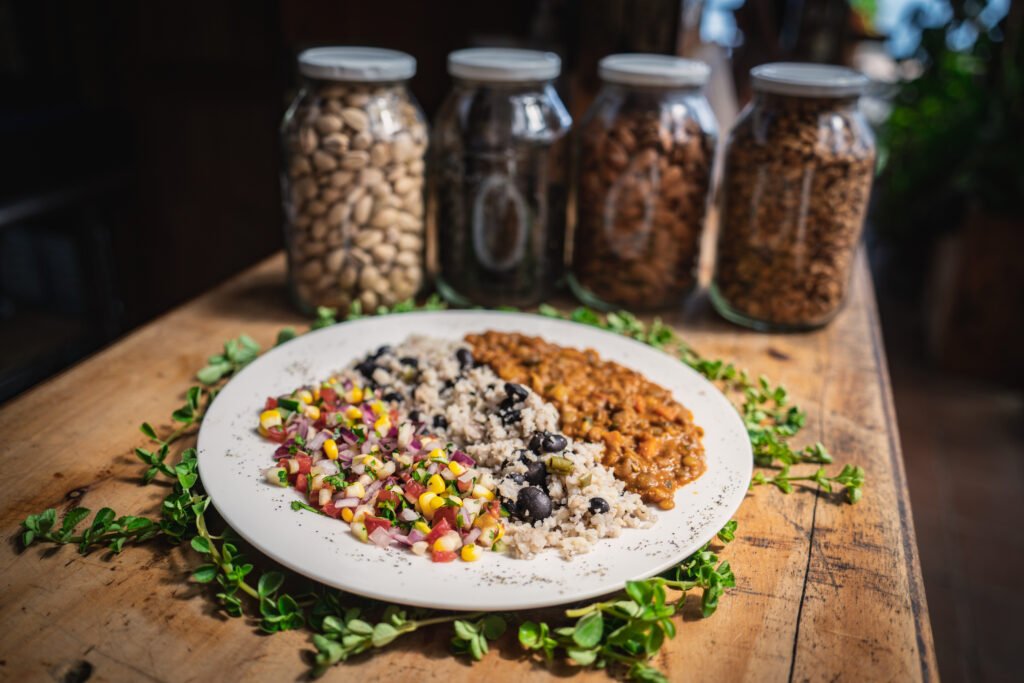Exquisite Showdown: Top 6 Things to Know About Traditional Food Guatemala vs Cuba

Exploring the Culinary Heritage of Guatemala
Delving into the culinary heritage of Guatemala is akin to embarking on an odyssey through time and tradition. With the tapestries of its historical past as the backdrop, each dish recounts a tale of convergence between cultural influences and indigenous roots. The distinct geographical features ranging from the towering highlands to the lush tropical coasts have significantly contributed to the broad spectrum of flavors found in Guatemalan dishes. In this culinary realm, hearty soups and robust sauces are not mere meals but are symbolic of the warmth and hospitality inherent within Guatemalan culture, while simultaneously celebrating the preservation of ancient cooking practices.
Distinctive Ingredients in Guatemalan Cuisine
The rich volcanic soil of Guatemala is responsible for cultivating a plethora of unique ingredients that form the foundation of the country’s vibrant gastronomy. Corn is not only a fundamental staple in the Guatemalan diet but also carries immense cultural significance, used extensively to create the ubiquitous tortillas and tamales savored across the nation. Complementary staples such as beans and squash are prominent, and the addition of local ingredients like chiltepe peppers contributes a nuanced yet intense burst of spice to the country’s flavor profile, further enhancing the culinary experience.
Famed Guatemalan Dishes Worth Trying
For those seeking to immerse themselves in authentic Guatemalan cuisine, indulging in traditional dishes like Pepian or Kak’ik is essential. Such culinary experiences offer a rich tapestry of taste, marked by sumptuous gravies each carefully simmered to culminate in an exquisite amalgamation of spices and textures. These dishes are a testament to the enduring legacy of Maya culinary traditions that have gracefully interlaced with Spanish influences, thus creating an unforgettable gastronomic journey for anyone who has the pleasure of tasting them.
Savoring the Vibrant Flavors of Cuban Cuisine
Exploring the cuisine of Cuba is like engaging with a vibrant tapestry of flavors that have been influenced by Africa, Spain, and the Caribbean. The island’s storied past and the resilience and creativity of its people are deeply reflected in its food culture. Cuban cuisine transcends simplicity with its hearty and soulful dishes that radiate the warmth of its people’s spirit. The use of modest ingredients, skillfully transformed into dishes bursting with character, is a testament to the alchemy of Cuban cooking.
The Cornerstones of Cuban Gastronomy
Central to the Cuban culinary narrative are elements like succulent pork and seafood, which are often anointed with fragrant notes of garlic, cumin, and oregano, and the zestiness of citrus. The staple combination of rice and beans, known as ‘moros y cristianos,’ is a simple yet essential component of many Cuban meals, while the sweet nuances of ripe plantains frequently provide a delightful counterpoint to the savory dishes. These foundational elements contribute to the rich and diverse tableau of Cuban cuisine.
Cuban Culinary Delicacies to Experience
To truly appreciate and understand Cuban cuisine, one should experience signature offerings like Ropa Vieja or Lechón asado. These dishes are culinary masterpieces that illustrate the magic of Cuban cooking, turning simple ingredients into sumptuous feasts that linger in the memory. Every bite delivers a complexity of flavors that tells a story of the island’s rich cultural tapestry, inviting diners on a journey through the essence of Cuba’s culinary artistry.
Cultural Significance of Food Traditions in Guatemala and Cuba
The culinary traditions of Guatemala and Cuba serve as more than nourishment; they are the embodiment of each country’s identity and storied past. Within every recipe is a chronicle of battles fought and overcome; innovations spurred by necessity, and ingenuity born from scarcity. Food stands as an anthem of national pride, reflecting the resilience and creativity of people who transform humble ingredients into feasts that not only satiate hunger but also capture the essence of their collective heritage.
Historical Influence on Contemporary Dishes
The contemporary dishes of Guatemala have been profoundly shaped by the historic amalgamation of native culinary customs with Spanish colonial influences. These timeless recipes have not simply stood the test of time; they’ve become cultural icons in their own right, echoing the voices of ancestors and evoking a sense of shared heritage. Similarly, Cuban cuisine has managed to preserve the unique flavors stemming from its African and Caribbean roots, while seamlessly weaving in Spanish gastronomic influences, resulting in a culinary narrative that’s as rich in flavor as it is in history.
Food as a Reflection of Cultural Identity
Traditional recipes in Guatemala and Cuba are much more than methods of preparing food; they are cherished inheritances that anchor each nation’s cultural identity. These recipes are imprinted with traces of geographic terrain and bygone eras, with every ingredient telling a part of the nation’s story. Preparing and sharing these foods are acts of cultural preservation and expression, whereby each dish serves not only to feed the body but also to sustain a rich legacy of community and identity.
Comparative Analysis: Cooking Techniques and Style
While both cuisines boast an array of sumptuous fare, their cooking techniques and styles offer a fascinating study in contrasts and convergences.
Guatemala’s Time-Honored Cooking Methods
From the pungent recados (spice pastes) to the slow-simmered broths, Guatemalan culinary methods emphasize depth and complexity. The ancient practice of nixtamalization of corn and the stone grinding of spices are testaments to time-honored techniques that have been preserved.
The Art of Cuban Cooking
Cuban Cuisine shines in its artistry of marination and slow-roasting techniques that allow for an intimate blending of flavors. This dedication to the craft, exemplified in the time-honored ‘cocina criolla,’ involves a nurturing of ingredients, whereby meats are infused with a complex array of spices and cooked patiently until they reach succulent perfection. It’s a style of cooking that invites comfort and embodies the generous spirit of Cuban households.
A Tantalizing Duel: Side-by-Side Dish Comparison
Engaging with Guatemalan and Cuban dishes side by side illuminates a diverse palate of flavors, each dish narrating its unique story, with its distinct sense of place and tradition. This delectable juxtaposition not only stimulates the senses but also highlights the intrinsic culinary value that each country’s gastronomy brings to the table. It is an enticement of the taste buds that showcases the rich tapestry of heritage and taste that Guatemalan and Cuban foods embody.

Ingredients and Spices: A Tale of Two Countries
The interplay between the spices and ingredients that characterize Guatemalan and Cuban cuisines offers a profound glimpse into the essence of their culinary hearts. In Guatemala, indigenous spices such as achiote and the world-renowned cardamom contribute not just flavor depth but are also intertwined with the country’s agricultural and cultural history. Meanwhile, Cuban cuisine demonstrates a mastery in achieving a harmonious spice balance, as evidenced by the judicious use of cumin and bay leaves that impart warmth and layers of complexity to every dish, without overpowering the palate.
Guatemala’s Indigenous Spices and Their Uses
Guatemala boasts an array of indigenous spices, like achiote and cardamom, which not only add depth to the flavor but also have a profound connection to the country’s agricultural and historical narratives.
Cuban Flavor Profiles: More Than Just Heat
Cuban cuisine, meanwhile, finds its soul in the delicate balance of spices like cumin and bay leaves, which imbue dishes with warmth without overpowering, illustrating the subtlety and complexity of Cuban flavor profiles.
The Role of Traditional Food in Guatemalan and Cuban Festivities
For residents of Guatemala and Cuba, traditional dishes serve as the epicenter of cultural celebrations, and festivals provide a perfect backdrop for these culinary delights. In such festive environments, food takes center stage, showcasing the significant role that culinary traditions play in fostering community bonds and shared joy. The foods celebrated during these events are not only a source of sensory satisfaction, but also vessels for communal memory-making and the reinforcement of cultural values.
Festival Foods: A Time for Celebration and Savory Delights
In Guatemala and Cuba, festivals are a time of culinary exuberance where traditional dishes are proudly put on display as harbingers of joy and celebration. These dishes bring forth the festivity’s spirit, weaving together taste and tradition in a shared culinary experience. The festivals are much more than occasions for merriment; they are expressions of national identity, encapsulating the exuberant spirit of the people, who revel in the heritage and nostalgia that come hand in hand with each flavorful bite.
FAQ: Questions and Answers of Traditional food Guatemala vs Cuba
What is the traditional food in Guatemala?
What is Guatemala’s number one food?
While it is difficult to pin down a single food as Guatemala’s number one, ‘Pepián’ is often considered one of the most traditional and beloved dishes in the country. This complex, flavorful stew represents the fusion of native and colonial culinary traditions and is a point of pride in Guatemalan cuisine. It is often prepared for special occasions and is revered for its depth of flavor and historic significance.
Is Guatemalan food similar to Mexican food?
Guatemalan food and Mexican food share some ingredients and dishes due to their geographic proximity and common pre-Columbian heritage. Both cuisines rely heavily on corn, beans, and chili peppers. However, Guatemalan cuisine tends to be less spicy compared to Mexican food and features unique dishes and flavors. For instance, Guatemalan tamales are typically wrapped in banana leaves, as opposed to the corn husk wrapping used in Mexico. Guatemala also has its own distinct sauces and preparations, such as ‘Jocón’ (a green sauce made with tomatillos) and ‘Hilachas’ (shredded beef in a tomato-based sauce), that set its culinary tradition apart from Mexican cuisine.
What is the tradition of Guatemala?
What are some popular snacks found in Guatemala?
Street food and snacks in Guatemala offer a flavorful insight into the culture. Popular options include ‘Tostadas,’ a crunchy fried or baked tortilla topped with guacamole, beans, cheese, and salsa; ‘Garnachas,’ small tortillas with meat, cabbage, and salsa; and ‘Elote,’ which is a seasoned whole corn on the cob. Sweet cravings are satisfied with treats like ‘Rellenitos,’ banana dough filled with sweetened black beans and fried, and ‘Chuchitos,’ similar to tamales, but smaller and with a simpler filling.
How do Guatemalan celebrations influence their food?
Guatemalan celebrations often revolve around food, with specific dishes associated with certain holidays or events. For example, ‘Tamales Colorados’ and ‘Tamales Negros,’ are traditionally served during Christmas, while ‘Fiambre,’ a cold salad with over 50 ingredients, is exclusively prepared for ‘El Día de los Muertos.’ ‘Paches,’ which are potato-based tamales, are typically enjoyed during Thursday dinners, and for ‘La Semana Santa,’ sweet and savory dishes, including ‘Torrejas,’ a type of sweet bread in syrup, play a central role.
What are the staple ingredients in Guatemalan cooking?
The backbone of Guatemalan cuisine consists of ingredients native to the land. Corn is the staple food, present in the form of tortillas, tamales, and atole. Beans, particularly black beans, are another staple, often served whole, refried, or as a part of main dishes. Chile peppers, tomatoes, tomatillos, and a variety of fruits, including plantains and bananas, are widely used. Spices and herbs such as cinnamon, cloves, coriander, and mint add distinct flavor to their dishes, while seeds like sesame and pumpkin seeds are used to thicken and flavor sauces.
What role does corn play in Guatemalan cuisine?
Corn is at the heart of Guatemalan cuisine and cultural identity. It goes beyond being a mere ingredient; it is a fundamental component of many traditional dishes and serves as a representation of life and fertility in Mayan mythology. Corn comes in many forms: ‘Tortillas’ are served with almost every meal, ‘Tamalitos’ are a staple snack or side dish, and ‘Atole,’ a corn-based beverage, is consumed both in everyday life and during celebrations. The importance of corn reflects the deep agricultural roots and traditions of the Guatemalan people, tying the past with the present.
Summary of Traditional food Guatemala vs Cuba
In this delectable exploration of culinary traditions, we have traversed the rich flavors and unique cooking styles that define traditional Guatemalan and Cuban foods. From the distinct ingredients of Guatemala’s highlands to the vibrant, rhythmic tastes of Cuba’s streets, each cuisine offers a tantalizing array of dishes steeped in cultural significance.
We’ve unearthed the historical roots that have shaped these nations’ foodscapes, revealing the profound ways in which cuisine mirrors cultural identity. Whether it’s through the smoky aroma of Guatemalan chiles or the zesty tang of Cuban mojo, each dish tells a story of cultural fusion and adaptation.
Our comparative analysis illustrated the artistic and practical nuances between Guatemalan and Cuban cooking techniques, while side-by-side comparisons of the countries’ signature dishes brought to life the friendly rivalry of these culinary powerhouses.
The intriguing blend of indigenous spices from Guatemala’s rich soil against Cuba’s bold flavor profiles emphasizes that while the ingredients may be worlds apart, the passion for food transcends borders.
As we savored the role of traditional foods in festivity and celebration, it became clear that these dishes are not merely sustenance but a celebration of culture and an invitation to community.
In conclusion, while both Guatemala and Cuba offer gastronomic experiences that are emblematic of their historical and cultural landscapes, the showdown between their traditional foods isn’t just about which is superior, but about appreciating the diversity and depth that each brings to the table. The journey through their culinary heritages isn’t a competition; it is a celebration of the sensory richness that makes each cuisine unique and beloved in its own right.

Looking for a place to stay? At Eagles Nest Atitlan we offer all inclusive rooms. Take advantage of the yoga classes, delicious traditional food, and breathtaking views that are at your disposal. Book here.



